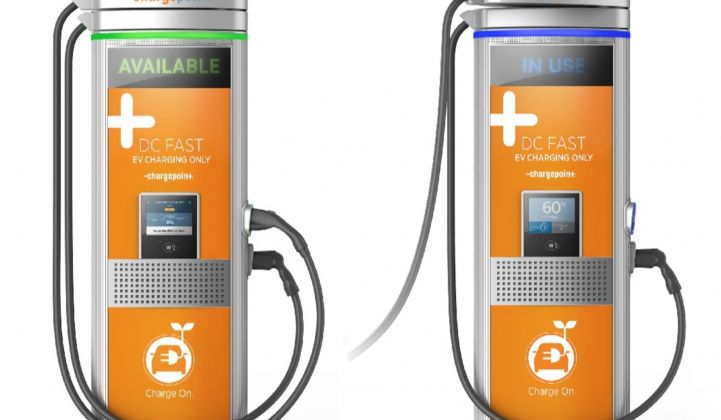ChargePoint just picked up another $24 million in venture capital, bringing it closer to its $125 million goal this year.
It's another step toward global expansion. And possibly an expansion into flying cars.
In March, the company closed an $82 million round led by Daimler to grow its electric-car charging networks into Europe. According to an SEC filing, ChargePoint raised just over $106 million in the last few months -- bringing its lifetime total to $279 million.
Previous investors include BMW i Ventures, Linse Capital, Rho Capital Partners, and Braemar Energy Ventures.
With more than 33,000 charging stations, ChargePoint is the biggest EV charging service provider in the U.S. Now it is eyeing Europe -- the second biggest EV market in the world -- as the next growth opportunity.
Flush with tens of millions in new venture capital, ChargePoint is expanding into European countries looking to promote fast-charging infrastructure. Last week, the company signed a deal to deliver 200 rapid-charge systems to InstaVolt in the U.K., which will be installed along popular driving routes in the country.
ChargePoint also wants to bring consistency to "fragmented" European charging infrastructure.
"Currently, there are dozens of providers of EV charging hardware, software and driver networks in a fragmented market. They all work differently and often require drivers to sign up for separate accounts, which creates a confusing and cumbersome charging experience for EV drivers," wrote the company, explaining its European strategy.
Europe's electric car market is growing -- but not as fast as many predicted. Battery-electric vehicles grew 4.6 percent in Western Europe in 2016, according to the British Automotive Industry Data. This year, however, sales appear to be picking up in the region.
If electric cars weren't hard enough, ChargePoint is looking even further into the future.
Last month, the company said it will develop fast-charging solutions for a vertical takeoff and landing (VTOL) transportation fleet envisioned by Uber. (Uber first proposed the idea last October in a white paper and recently held a summit, where experts discussed the concept.)
"The power demands of on-demand eVTOL create unique charging challenges: eVTOL vehicles need to make frequent short trips, but will have limited time to charge between trips while loading passengers. They will endure hundreds of charging cycles in their lifetime and require massive amounts of power for vertical takeoff and landing. Without the right charging infrastructure in place, eVTOL cannot become a viable form of transportation," wrote ChargePoint in its partnership announcement.
In January, ChargePoint unveiled a 400-kilowatt fast charger that can charge buses, cars and trucks (and maybe flying cars) in minutes. The company said the chargers are designed for "the next 10 years in transportation technology."
The company's "vertiport" chargers will use the same architecture as the newly released fast chargers.
So in the next decade, ChargePoint's infrastructure may stretch beyond carports and parking lots. It could look a little something like this:

Recommended reading:
ChargePoint Raises $82M to Take Smart EV Charging to Europe
Volkswagen’s EV Infrastructure Plan Fraught With Tensions Over Competition, Equity Issues



